-
 Bitcoin
Bitcoin $78,376.0795
-4.77% -
 Ethereum
Ethereum $1,548.8063
-11.55% -
 Tether USDt
Tether USDt $0.9994
-0.02% -
 XRP
XRP $1.8818
-9.04% -
 BNB
BNB $551.7480
-4.69% -
 USDC
USDC $1.0000
0.01% -
 Solana
Solana $106.1095
-7.66% -
 Dogecoin
Dogecoin $0.1468
-8.95% -
 TRON
TRON $0.2275
-4.95% -
 Cardano
Cardano $0.5707
-8.85% -
 UNUS SED LEO
UNUS SED LEO $8.9335
-1.49% -
 Toncoin
Toncoin $3.0253
-8.20% -
 Chainlink
Chainlink $11.2802
-7.86% -
 Stellar
Stellar $0.2302
-8.79% -
 Avalanche
Avalanche $16.4569
-4.24% -
 Shiba Inu
Shiba Inu $0.0...01128
-5.14% -
 Sui
Sui $2.0097
-2.68% -
 Hedera
Hedera $0.1463
-4.76% -
 MANTRA
MANTRA $6.2909
1.82% -
 Polkadot
Polkadot $3.5783
-7.89% -
 Bitcoin Cash
Bitcoin Cash $271.3725
-8.06% -
 Dai
Dai $1.0000
0.00% -
 Litecoin
Litecoin $70.0284
-11.01% -
 Ethena USDe
Ethena USDe $0.9986
-0.03% -
 Bitget Token
Bitget Token $4.0832
-5.49% -
 Pi
Pi $0.5780
-5.55% -
 Monero
Monero $201.8656
-4.22% -
 Hyperliquid
Hyperliquid $10.9226
-3.72% -
 Uniswap
Uniswap $5.1124
-8.67% -
 OKB
OKB $51.1549
-4.68%
What are the reserve assets of USDT?
USDT's reserve assets, primarily cash and equivalents, are crucial for maintaining its dollar peg, but transparency issues and past legal challenges have raised concerns about their management.
Apr 06, 2025 at 10:56 pm
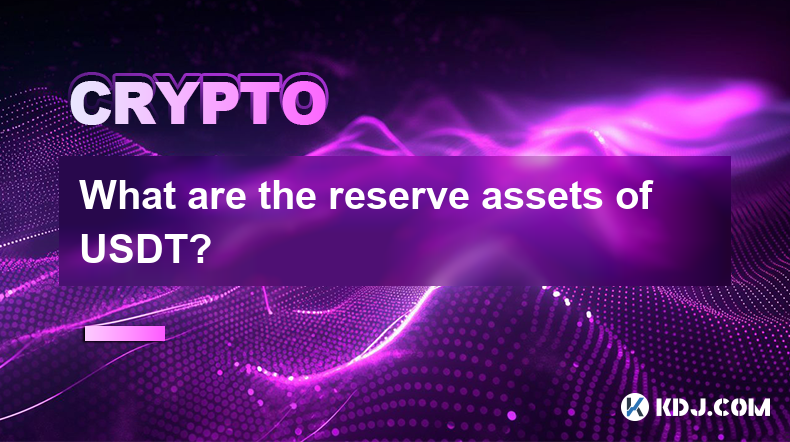
The reserve assets of USDT, also known as Tether, are a crucial aspect of the stablecoin's operation and credibility. Tether Limited, the company behind USDT, claims that each USDT token is backed by an equivalent amount of reserve assets, primarily in the form of cash and cash equivalents. This backing is intended to ensure that USDT maintains a stable value, pegged to the US dollar. However, the exact composition and management of these reserve assets have been a subject of scrutiny and debate within the cryptocurrency community. This article will delve into the details of what constitutes the reserve assets of USDT, how they are managed, and the transparency issues surrounding them.
Composition of USDT Reserve Assets
The reserve assets of USDT are primarily composed of cash and cash equivalents. According to Tether Limited, these assets include:
- Cash: This includes physical currency and demand deposits held in banks. Cash reserves are crucial for maintaining the peg to the US dollar, as they can be quickly converted to meet redemption requests.
- Cash Equivalents: These are highly liquid investments that can be converted into cash with minimal risk of value fluctuation. Examples include Treasury bills, commercial paper, and certificates of deposit. These assets provide a balance between liquidity and yield, helping to stabilize the value of USDT.
Additionally, Tether has claimed to hold other assets such as secured loans and corporate bonds. However, the exact proportions of these assets within the reserve pool are not always clearly disclosed, leading to concerns about the true backing of USDT.
Management of USDT Reserve Assets
The management of USDT's reserve assets is handled by Tether Limited, with oversight from their banking partners and auditors. The process involves:
- Investment Decisions: Tether Limited makes decisions on how to allocate the reserve assets to maximize liquidity and yield while maintaining the stability of USDT. This involves balancing investments in cash, cash equivalents, and other permissible assets.
- Redemption and Issuance: When users redeem or purchase USDT, Tether Limited must manage the inflow and outflow of reserve assets to ensure that the total supply of USDT remains fully backed. This requires careful monitoring and adjustment of the reserve pool.
- Auditing and Reporting: Tether Limited engages third-party auditors to review their reserve assets periodically. However, the frequency and depth of these audits have been a point of contention, with some critics arguing that the audits are not comprehensive enough to provide full transparency.
Transparency Issues Surrounding USDT Reserve Assets
Transparency has been a significant concern for USDT's reserve assets. While Tether Limited has made efforts to provide more information, several issues persist:
- Limited Disclosure: Tether has been criticized for not providing detailed breakdowns of their reserve assets. While they publish quarterly attestations, these reports often lack the granularity needed to fully understand the composition and quality of the reserves.
- Audit Quality: The audits conducted by third parties have been criticized for their scope and independence. Some audits are described as "attestations" rather than full audits, which means they do not verify the full financial health of Tether Limited.
- Historical Controversies: Tether has faced legal challenges and scrutiny over its reserve practices. For instance, in 2021, Tether settled with the New York Attorney General's office, agreeing to provide more transparency and cease trading in New York. Such incidents have heightened skepticism about the true nature of USDT's backing.
Impact of Reserve Assets on USDT's Stability
The reserve assets play a critical role in maintaining USDT's peg to the US dollar. Here's how they influence the stability:
- Liquidity: High levels of cash and cash equivalents ensure that Tether can meet redemption requests without causing significant fluctuations in the value of USDT. This liquidity is essential for maintaining trust in the stablecoin.
- Yield Management: By investing in cash equivalents and other assets, Tether can generate returns that help cover operational costs and maintain the peg. However, these investments must be carefully managed to avoid risk that could undermine the stability of USDT.
- Market Confidence: The perception of the reserve assets' quality and transparency directly impacts market confidence. Any doubts about the backing of USDT can lead to volatility and de-pegging events, as seen in the past.
Regulatory and Legal Considerations
The regulatory environment surrounding USDT's reserve assets is complex and evolving. Key considerations include:
- Compliance: Tether Limited must comply with various financial regulations, including anti-money laundering (AML) and know-your-customer (KYC) requirements. This involves managing the reserve assets in a way that aligns with these regulations.
- Legal Challenges: Tether has faced legal actions related to its reserve practices. These challenges often focus on the transparency and accuracy of the company's claims about its reserve assets. Resolving these issues is crucial for maintaining the legitimacy of USDT.
- International Regulations: As a global stablecoin, USDT must navigate different regulatory frameworks across jurisdictions. This can impact how Tether manages and reports on its reserve assets, adding complexity to their operations.
Future Outlook for USDT Reserve Assets
The future of USDT's reserve assets will likely be influenced by several factors:
- Increased Transparency: There is growing pressure on Tether Limited to provide more detailed and frequent reporting on its reserve assets. Enhanced transparency could help rebuild trust and stabilize USDT's value.
- Regulatory Developments: As regulatory frameworks for stablecoins evolve, Tether may need to adjust its reserve management practices. This could include more stringent requirements for asset backing and reporting.
- Technological Innovations: Advances in blockchain and financial technology could lead to new methods for managing and verifying reserve assets. Tether may explore these innovations to improve the efficiency and security of its reserve management.
Common Questions Related to USDT Reserve Assets
Q: What are the primary components of USDT's reserve assets?
A: The primary components of USDT's reserve assets are cash and cash equivalents. Cash includes physical currency and demand deposits, while cash equivalents include highly liquid investments like Treasury bills and commercial paper.
Q: How does Tether manage its reserve assets?
A: Tether Limited manages its reserve assets by making investment decisions to balance liquidity and yield, handling redemption and issuance of USDT, and engaging third-party auditors to review the reserves periodically.
Q: Why is transparency an issue with USDT's reserve assets?
A: Transparency is an issue because Tether Limited has been criticized for not providing detailed breakdowns of its reserve assets. The audits conducted are often seen as lacking in scope and independence, leading to skepticism about the true backing of USDT.
Q: How do the reserve assets impact USDT's stability?
A: The reserve assets impact USDT's stability by ensuring liquidity for redemption requests, managing yield to cover operational costs, and maintaining market confidence. Any doubts about the reserve assets can lead to volatility and de-pegging events.
Q: What regulatory and legal challenges has Tether faced regarding its reserve assets?
A: Tether has faced legal challenges, including a settlement with the New York Attorney General's office in 2021, which required more transparency. The company must also navigate complex international regulatory frameworks, impacting how it manages and reports on its reserve assets.
Q: What might the future hold for USDT's reserve assets?
A: The future of USDT's reserve assets could involve increased transparency, adjustments to meet evolving regulatory requirements, and the adoption of technological innovations to improve reserve management and verification.
Disclaimer:info@kdj.com
The information provided is not trading advice. kdj.com does not assume any responsibility for any investments made based on the information provided in this article. Cryptocurrencies are highly volatile and it is highly recommended that you invest with caution after thorough research!
If you believe that the content used on this website infringes your copyright, please contact us immediately (info@kdj.com) and we will delete it promptly.
- As clouds gathered over the crypto landscape, a flash tore through the sky: Ethereum, an essential pillar, lost 14% of its value in 24 hours
- 2025-04-08 01:15:11
- The scandal related to ZKasino, a blockchain-based gambling platform, continues to widen
- 2025-04-08 01:15:11
- As We Approach May 2025, Dogecoin (DOGE) Investors Are Facing Uncertainty
- 2025-04-08 01:10:12
- Cryptocurrency markets plunged sharply early Monday, wiping billions from the total market capitalization
- 2025-04-08 01:10:12
- Dogecoin (DOGE) Price Surge Incoming? Analysts Point to Historical Patterns
- 2025-04-08 01:05:12
- Mutuum Finance (MUTM) Token Identified by Algorithms to Deliver Exponential Upside Before 2025
- 2025-04-08 01:05:12
Related knowledge
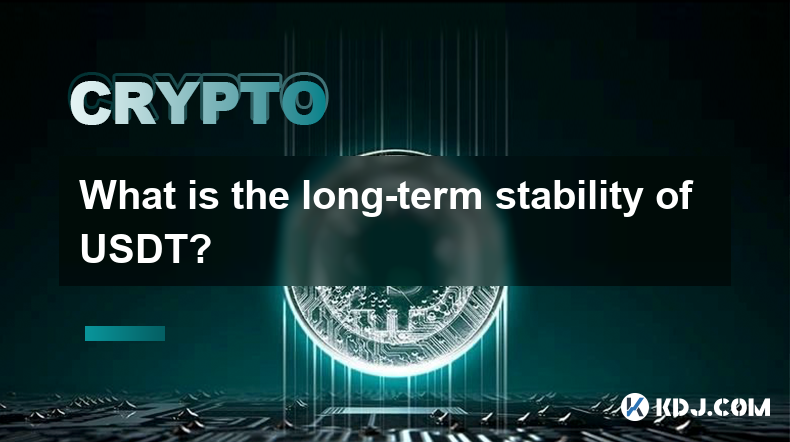
What is the long-term stability of USDT?
Apr 04,2025 at 10:28pm
The long-term stability of USDT, also known as Tether, is a topic of significant interest within the cryptocurrency community. USDT is a type of stablecoin, designed to maintain a stable value by being pegged to a reserve asset, typically the US dollar. The stability of USDT is crucial for its widespread use in trading, as a hedge against volatility, an...
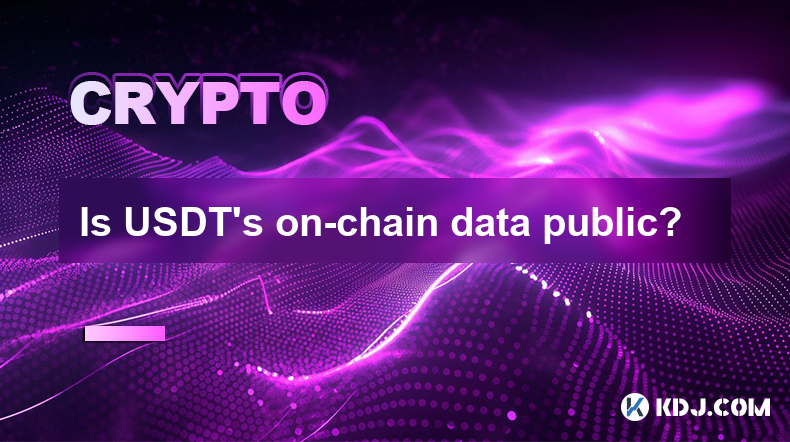
Is USDT's on-chain data public?
Apr 05,2025 at 08:49am
The transparency of USDT's on-chain data is a topic of significant interest within the cryptocurrency community. Tether, the company behind USDT, claims that its operations are transparent and that the on-chain data is publicly accessible. However, understanding the nuances of this data and how to access it can be challenging. This article will delve in...
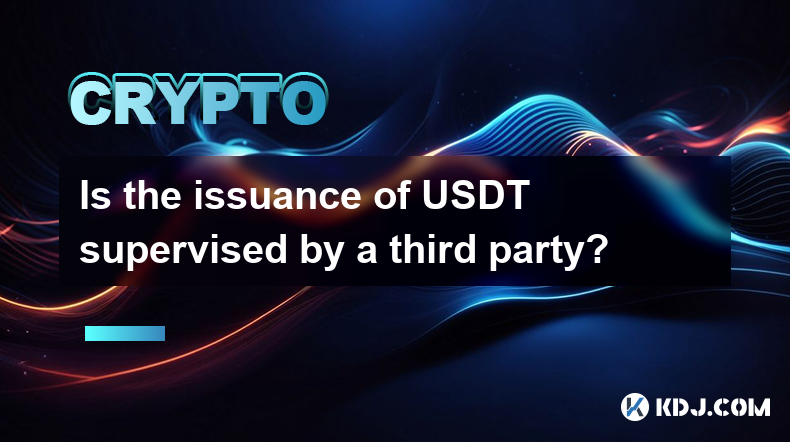
Is the issuance of USDT supervised by a third party?
Apr 06,2025 at 01:49pm
The issuance of USDT, also known as Tether, is a topic that often sparks curiosity and debate within the cryptocurrency community. Many wonder whether this stablecoin, which is pegged to the US dollar, is supervised by a third-party to ensure transparency and accountability. In this article, we will delve into the details of USDT's issuance process and ...
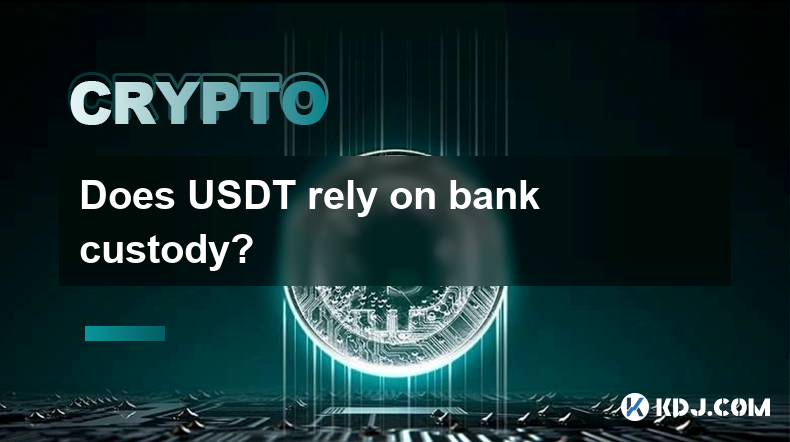
Does USDT rely on bank custody?
Apr 06,2025 at 03:00pm
Tether (USDT) is a widely used stablecoin in the cryptocurrency market, designed to maintain a stable value by pegging it to the US dollar. One of the critical aspects of understanding USDT is its reliance on bank custody. This article will delve into the mechanisms behind USDT's operations, specifically focusing on the role of bank custody in its ecos...
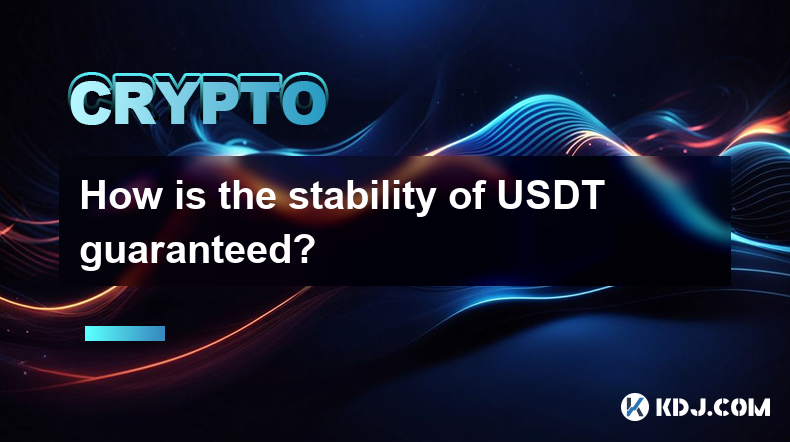
How is the stability of USDT guaranteed?
Apr 03,2025 at 06:00am
The stability of USDT, also known as Tether, is a critical aspect that underpins its role as a stablecoin in the cryptocurrency market. USDT is designed to maintain a 1:1 peg with the US dollar, which is achieved through a combination of mechanisms and practices. Understanding these elements is essential for anyone interested in the stability and reliab...

What are the reserve assets of USDT?
Apr 06,2025 at 10:56pm
The reserve assets of USDT, also known as Tether, are a crucial aspect of the stablecoin's operation and credibility. Tether Limited, the company behind USDT, claims that each USDT token is backed by an equivalent amount of reserve assets, primarily in the form of cash and cash equivalents. This backing is intended to ensure that USDT maintains a stable...

What is the long-term stability of USDT?
Apr 04,2025 at 10:28pm
The long-term stability of USDT, also known as Tether, is a topic of significant interest within the cryptocurrency community. USDT is a type of stablecoin, designed to maintain a stable value by being pegged to a reserve asset, typically the US dollar. The stability of USDT is crucial for its widespread use in trading, as a hedge against volatility, an...

Is USDT's on-chain data public?
Apr 05,2025 at 08:49am
The transparency of USDT's on-chain data is a topic of significant interest within the cryptocurrency community. Tether, the company behind USDT, claims that its operations are transparent and that the on-chain data is publicly accessible. However, understanding the nuances of this data and how to access it can be challenging. This article will delve in...

Is the issuance of USDT supervised by a third party?
Apr 06,2025 at 01:49pm
The issuance of USDT, also known as Tether, is a topic that often sparks curiosity and debate within the cryptocurrency community. Many wonder whether this stablecoin, which is pegged to the US dollar, is supervised by a third-party to ensure transparency and accountability. In this article, we will delve into the details of USDT's issuance process and ...

Does USDT rely on bank custody?
Apr 06,2025 at 03:00pm
Tether (USDT) is a widely used stablecoin in the cryptocurrency market, designed to maintain a stable value by pegging it to the US dollar. One of the critical aspects of understanding USDT is its reliance on bank custody. This article will delve into the mechanisms behind USDT's operations, specifically focusing on the role of bank custody in its ecos...

How is the stability of USDT guaranteed?
Apr 03,2025 at 06:00am
The stability of USDT, also known as Tether, is a critical aspect that underpins its role as a stablecoin in the cryptocurrency market. USDT is designed to maintain a 1:1 peg with the US dollar, which is achieved through a combination of mechanisms and practices. Understanding these elements is essential for anyone interested in the stability and reliab...

What are the reserve assets of USDT?
Apr 06,2025 at 10:56pm
The reserve assets of USDT, also known as Tether, are a crucial aspect of the stablecoin's operation and credibility. Tether Limited, the company behind USDT, claims that each USDT token is backed by an equivalent amount of reserve assets, primarily in the form of cash and cash equivalents. This backing is intended to ensure that USDT maintains a stable...
See all articles





















































































